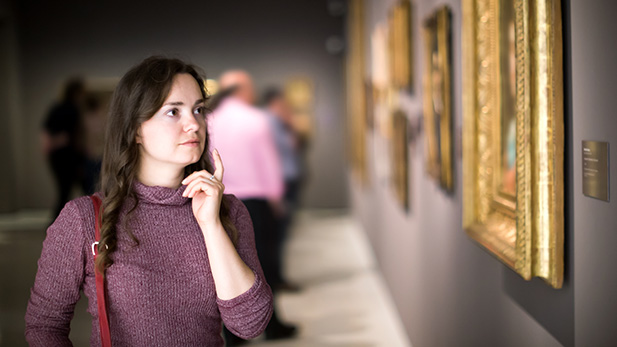Students on Picasso’s complex artworks: creative but ugly

Photo: Shutterstock
How do we decide if a painting is beautiful? And does creativity equal beauty?
Bo Christensen, CBS Professor, Linden J. Ball from the University of Central Lancashire and Rolf Reber from University of Oslo have looked into these questions in a new study.
Having conducted seven different experiments where 415 university students had to evaluate 60 paintings by the artist Pablo Picasso, the verdict is clear:
“We find simple art which is easy to understand more beautiful. Complex images, however, are considered more creative but also uglier,” says Bo Christensen, Professor with special responsibilities (mso) at the Department of Marketing at CBS.
Simple = beautiful and complex = creative
To examine the perception of beauty and creativity, the researchers used ‘perceptual fluency’, a concept describing how easily and fluently we perceive and judge what we see.
The more easily we process and understand something, the more likely we are to consider it beautiful because we associate how easy it is to process an object cognitively with positive emotions, explains Bo Christensen.
“The new and interesting finding is that the parameters are completely inverted when it comes to creativity. Our analysis shows that the more complex an image is, the more likely the student is to consider it creative,” he says and adds:
"The uglier the students found the paintings, the exponentially more complex and creative they found them.”
In contrast to previous research
Especially Picasso’s complicated cubist works were judged to be ugly but creative while his simpler line drawings were considered simple and beautiful.
Differing from other studies in the field, the result surprised the researchers.
“What you might intuitively think – and what has been the thesis of other studies – is that beauty and creativity are evaluated based on the same parameters. But our study shows that the degree of complexity is essential for whether we perceive an image to be beautiful or creative,” Bo Christensen explains.
However, some common traits of these parameters must still be met before we judge something to be either beautiful or creative.
Elements such as high contrast, high level of exposure (i.e. how many times you have seen the image) and symmetry are all essential for how we perceive images as both creative and beautiful.
A designer’s nightmare
Knowledge about what we perceive as beautiful and creative is important to companies selling design products, for instance.
“Wanting to create a product both creative and beautiful can be like walking a tightrope. If a company makes a product very complex, consumers will find it ugly and if they make it too simple, they will not find it creative enough,” says Bo Christensen and elaborates:
“In relation to lamps and watches, we know that consumers prefer an equal share of beauty and creativity, so it can be quite difficult for a designer to get it just right.
The study is just one step along the road in the mapping of how we consider beauty and creativity. Even so, Bo Christensen is proud of his contribution to the field:
“It feels great to contribute new knowledge to this very complex field,” he concludes.
For more information, please contact journalist Ida Eriksen